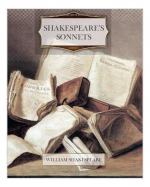|
This section contains 1,307 words (approx. 4 pages at 400 words per page) |

|
Section I Summary
Sonnet 1: Shakespeare uses vivid imagery from nature to express his yearnings and frustrations that he cannot seem to connect emotionally with the object of his desire. He compares her to a spring bud locked inside itself, all its beauty and splendor not quite accessible on the surface but nevertheless very real.
Sonnet 2: Taking a somewhat different tack, the poet tells his beloved that she shouldn't wait too long to marry and have his child.
Sonnet 3: The poet extends his argument for marriage and motherhood by telling his beloved that her mother's image is in her ("thou art thy mother's glass"), and she has a duty to create another being as beautiful as herself. Although she is beautiful the poet says, she can't use that excuse for not having a child.
Sonnet 4: Shakespeare argues his case using a financial analogy: the beautiful woman he loves owes...
(read more from the Section I Summary)
|
This section contains 1,307 words (approx. 4 pages at 400 words per page) |

|



